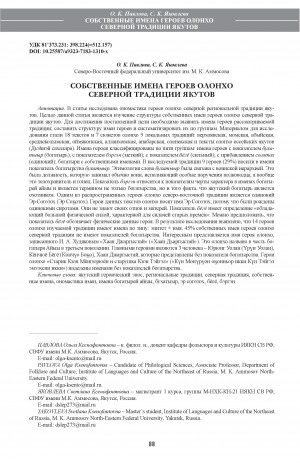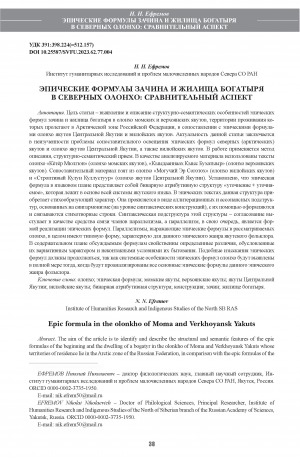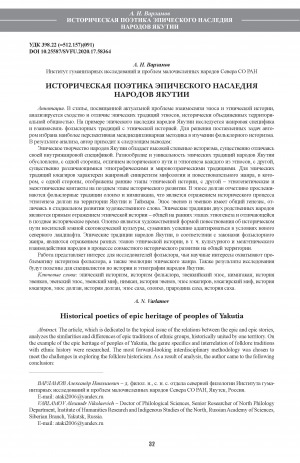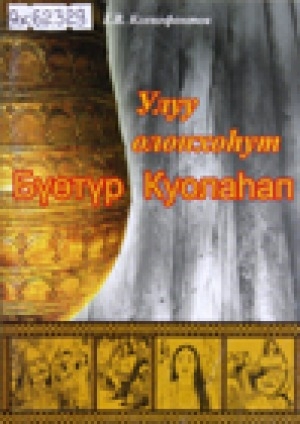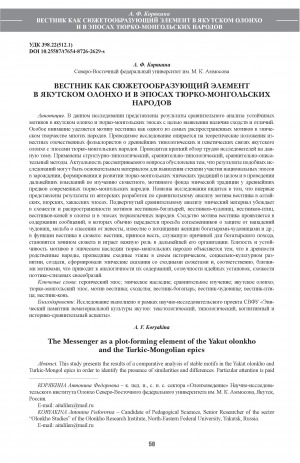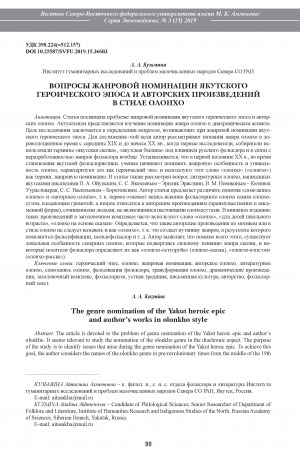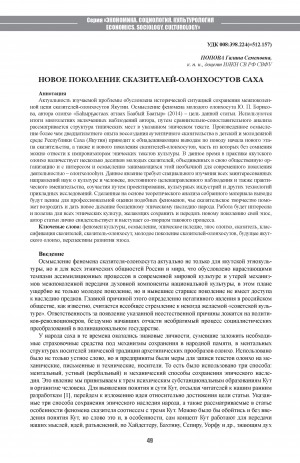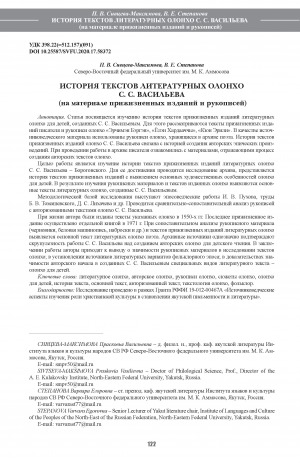Статья посвящается изучению текста сказания минусинских тюрков - предков современных хакасов "Алтын Кёк" ("Золотая Кукушка") в сравнении с якутским олонхо. Исследование проведено с использованием сравнительно-исторического метода, включающего структурный анализ, а также обзора научной литературы и описательного метода. История текста "Алтын Кёк", представляющего большой интерес для сравнительных исследований эпосов тюркских народов, ранее еще не была изучена. Его запись была произведена в 1847 г. М. А. Кастреном во время экспедиции в Сибири, а публикация - в 1859 г. в переводе А. А. Шифнера на немецкий язык. В результате проведенной работы выяснено, что основная структура этого сказания идентична с сюжетами архаических вариантов якутского олонхо об одиноком герое Эр Соготохе. Установленная общность, во-первых, является ярким подтверждением развития двух отдельных эпических традиций - якутской и хакасской, из единого первоисточника. Во-вторых, она дает четкое представление об основной структуре эпоса якутов до их ухода из южной родины: о сюжетно-композиционном строении, мотивах и эпизодах, образах, реалиях и мифологических представлениях, а также о некоторых речевых средствах эпической образности. В тексте "Алтын Кёк", на наш взгляд, также прослеживается определенный этап развития самостоятельной эпической традиции (или влияние другой традиции), о чем говорят структурные элементы, не характерные якутскому олонхо. В перспективе важными определяются исследование мифологических основ сказания "Алтын Кёк" на более глубоком уровне с привлечением этнографических данных, в особенности - об удаганском культе, продолжение сравнительного изучения якутского олонхо в сравнении с другими текстами минусинских тюрков, а также изучение языковых аспектов на материале оригинальной рукописи на "татарском" (хакасском) языке.
The article is devoted to the study of the text of the tale Altyn Kyok (Golden Cuckoo) of Minusinsk Turks, the ancestors of the modern Khakas people, in comparison with the Yakut olonkho. The study was conducted using the comparative-historical method including a structural analysis, as well as a review of scholarly literature and the descriptive method. The history of the text Altyn Kyok, which is of great interest for comparative studies of Turkic epics, has not yet been studied. It was written down in 1847 by Kastren during his expedition to Siberia, and published in 1859 in a German translation by Schifner. This work established that the main structure of the tale is identical to the plots of archaic variants of the Yakut olonkho about a lonely hero Er Sogotokh. The established similarity firstly proves the development of two separate epic traditions, the Yakut and the Khakas, from the common primary source. Secondly, it provides a clear idea of the basic structure of the epic of the Yakuts before their departure from their southern homeland: about plot structure, motifs and episodes, images, realities and mythological notions, as well as about some verbal means of epic imagery. The text of Altyn Kyok, in our opinion, also shows a stage of development of a separate epic tradition (or the influence of another tradition), as evidenced by structural elements, which are not typical of the Yakut olonkho. As far as the future prospects are concerned, our aim is to investigate the mythological basis of the epic tale Altyn Kyok on a deeper level using ethnographic data, in particular the Udagan cult, to continue the comparative study of the Yakut olonkho in comparison with other texts of Minusinsk Turks, as well as to study linguistic aspects on the original manuscript in the “Tatar” (Khakass) language.



